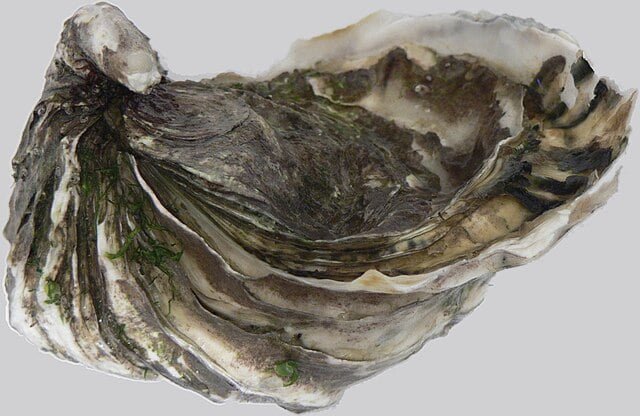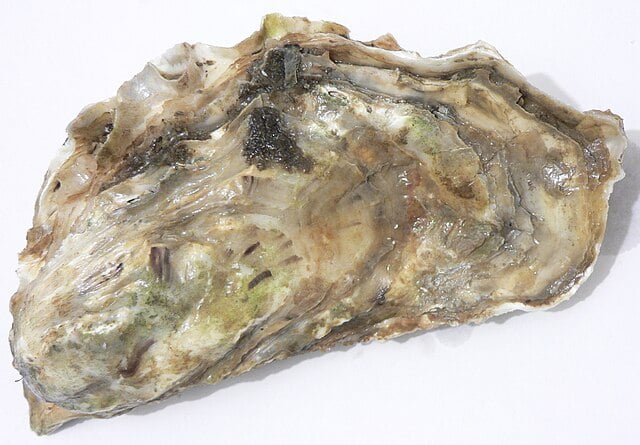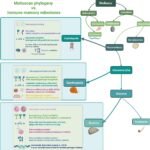
Marine diseases are wreaking havoc on farmed mollusks, especially on species like oysters. These diseases not only harm the animals themselves but also threaten the sustainability of a vital aquaculture sector. Fortunately, new research offers a ray of hope.
Scientists are uncovering the secrets of the oyster’s immune system, revealing a surprising capability: innate immune memory. This means that oysters can be “trained” to recognize and combat pathogens more effectively after an initial encounter.
A team of scientists from Ifremer (France) and the Univ Perpignan Via Domitia (France) demonstrated that UV-inactivated OsHV-1 is also a potent inducer of immune readiness in the Pacific Oyster Magallana (Crassostrea) gigas; furthermore, they report that previous exposure to the inactivated virus could effectively protect oysters against OsHV-1, significantly increasing oyster survival.
The herpes threat
As reported by the study, since 2008, Pacific oysters (Magallana gigas) have been plagued by recurrent mortalities of up to 100% in aquaculture farms worldwide, sometimes identified under the term Pacific oyster mortality syndrome (POMS).
One of the main culprits is Ostreid herpesvirus 1 (OsHV-1), a virus affecting Pacific oyster farms worldwide.
Previous studies showed promise in using a molecule called poly(I:C) to prepare the oyster’s immune system against OsHV-1. This preparation essentially “teaches” the oyster’s defenses how to identify and combat the virus.
New weapon: Training with inactivated viruses
Researchers used ultraviolet light to inactivate OsHV-1 (essentially a weakened form of the virus), essentially turning it into a “training virus.”
When oysters were previously exposed to this inactivated virus, they showed significantly higher survival rates against the active virus later on! Their immune systems effectively blocked viral replication and increased the production of antiviral genes, acting as a well-prepared defense team.
This “immune training” persisted for a significant period, suggesting long-term memory within the oyster’s immune system. This opens the door to the development of new prophylactic treatments (preventive measures) to safeguard oyster health in aquaculture.
Stay Always Informed
Join our communities to instantly receive the most important news, reports, and analysis from the aquaculture industry.
Deepening understanding of defense mechanisms
The research also delved into the “how” behind this protection. It seems that exposure to the inactivated virus hinders viral replication and triggers the expression of antiviral genes within the oyster. This coordinated response helps the oyster control the infection.
Long-lasting protection
Perhaps most excitingly, the protective effect lasted at least 3 months. This extended period of enhanced immunity points to the existence of true innate immune memory in oysters.
Benefits of this approach
- Sustainable: Protects oysters without compromising genetic diversity or harming the environment.
- Effective: Offers long-term protection against a significant disease threat.
- Economical: Avoids potential drawbacks associated with previous methods.
The road ahead
- Large-scale application: Optimization of the method for use in oyster farms, especially for young stages like larvae.
- Transgenerational protection: Exploring whether this immunity can be passed on to future generations of oysters.
- Long-term effects: Further research is needed to understand potential long-term impacts on oyster health.
- Mechanism understanding: Scientists are still unraveling how exactly oysters “remember” the inactivated virus.
Conclusion
“These results offer us today a unique opportunity to consider IP-based methods to protect Pacific oysters against OsHV-1 infection and other pathogens, resulting in better control of related mortality events,” concluded the researchers.
In this regard, the research opens doors to developing new preventive strategies (prophylaxis) to safeguard oyster health. By harnessing the power of immune preparedness, we can potentially create vaccines or treatments that significantly reduce disease outbreaks in oyster farms. This would not only benefit the oysters themselves but also ensure the ongoing sustainability of this vital aquaculture industry.
The project was funded by the “STAR” (Ifremer Innovation program), the EU VIVALDI project, and the “Primoyster” project funded by the French Research Agency (and the DECICOMP project.
Reference (open access)
Morga, B., Mège, M., Faury, N., Dégremont, L., Petton, B., Pépin, J., Renault, T., & Montagnani, C. (2024). Antiviral protection in the Pacific oyster Crassostrea (Magallana) gigas against OsHV-1 infection using UV-inactivated virus. Frontiers in Marine Science, 11, 1378511. https://doi.org/10.3389/fmars.2024.1378511
Editor at the digital magazine AquaHoy. He holds a degree in Aquaculture Biology from the National University of Santa (UNS) and a Master’s degree in Science and Innovation Management from the Polytechnic University of Valencia, with postgraduate diplomas in Business Innovation and Innovation Management. He possesses extensive experience in the aquaculture and fisheries sector, having led the Fisheries Innovation Unit of the National Program for Innovation in Fisheries and Aquaculture (PNIPA). He has served as a senior consultant in technology watch, an innovation project formulator and advisor, and a lecturer at UNS. He is a member of the Peruvian College of Biologists and was recognized by the World Aquaculture Society (WAS) in 2016 for his contribution to aquaculture.




